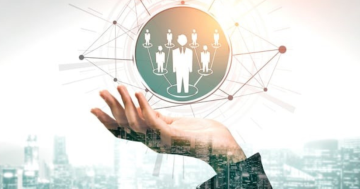Riia O’Donnell* says diversity and inclusion are not a zero-sum game and it’s important that employers approach people as individuals.
 Diversity and inclusion (D&I) initiatives are top of mind for employers; in fact, a majority now have some form of D&I programs or policies in place.
Diversity and inclusion (D&I) initiatives are top of mind for employers; in fact, a majority now have some form of D&I programs or policies in place.
But the execution of such plans can be challenging, with HR and diversity pros feeling like they’re weighing the priorities and preferences of some against those of others.
The key here, experts say, is finding the right mix, addressing everyone’s needs without too much disruption.
Every employee has an individual employee experience, and employers should aspire to have employee experiences, including inclusion, that work for all employees, Lauren Romansky, Gartner’s Managing Vice President in the HR practice, told HR Dive via email.
“We tend to look at perceptions across what are often underrepresented demographic groups to start so we can understand what’s going on,” writes Romansky.
For example: “If HR functions haven’t considered how men and women perceive their workplace experience, let’s start there.”
“But enacting initiatives to further include women certainly doesn’t mean that male employees would see their experience or inclusion erode.”
In other words, inclusion doesn’t have to be a zero-sum game — a belief Gartner outlined in a recent report.
“Ensuring someone is included doesn’t mean someone else is excluded, which should be a relief as organisations look to appease a variety of internal stakeholders,” she said.
Through all this, however, it’s important that organisations approach people as individuals.
While they may be part of various demographic groups, “the reality is each person isn’t just a demographic cut, and anything organisations can do to further personalise employee experience will go a long way towards inclusion,” Romansky said.
This may all sound like a tall order, but it must be done, she added: “If we don’t address everyone, we’re leaving them out of the workforce either explicitly as they turnover, or implicitly by not allowing them to fully contribute.”
- Get a top-down commitment
This first step is achieving buy-in at the uppermost levels of an organisation.
“It’s no secret,” Nina Cofer, Product Marketing Manager at Breezy HR told HR Dive, “men hold more senior and c-suite level positions than women by a landslide.”
It starts early: research shows that men are more likely to be promoted out of entry-level positions.
And that first step up the corporate ladder leads to a pattern of disparity all the way up through the c-suite, she explained.
Cofer suggested D&I leaders begin by providing data on diversity and inclusion to leadership to underscore its value.
“Once it is implemented,” she said, “keeping leadership accountable for set metrics is a must.”
Diversity and inclusion are not just an HR thing, they are an organisation-wide thing.
Everyone in the organisation should be kept aware of hiring goals related to D&I.
- Create a culture of openness
It’s also crucial that leaders create a culture of openness, allowing employees to share their experiences with a manager or teammates, Romansky said.
Leaders need to understand their role in creating an inclusive environment and correcting course based on employee feedback.
One of the best ways that organisations can do this is by creating cultural norms ahead of time, Romansky continued.
“Often cultural violations occur during peak, stressed times for the workplace.”
“None of us are at our best when we’re taxed or running at full speed.”
“So, what we’ve seen teams do is say, ‘when push comes to shove, how will we treat each other?’ and get specific about what that means in terms of collaboration and cooperation.”
To really appreciate each individual and the diversity of the experience they bring to an organisation, “it really comes down to creating an open and accepting dialogue for each person to share their truth,” Keith Kitani, CEO of GuideSpark told HR Dive.
To that end, the company shares stories that provide unique insights about employees and build connections between their diverse and distributed team members.
“We started a program called ‘Humans of GuideSpark’,” Kitani said, which is modelled after Humans of New York.
The program has been a great way for their team to understand each other, to empathise with one another and to see the value diversity brings, he said.
- Embed the plan
The plan also needs to be a full-organisation strategy, embedded in operational framework, according to Lynda Gonzales-Chavez, SVP and Chief Diversity Officer at the YMCA of the USA.
For her organisation, it required “a ‘systems thinking’ approach and is anchored in our commitment to community engagement, elevating youth voice, and an analysis and outcome of increased equity for all community,” she said.
Gonzales-Chavez recommended employers strengthen their global diversity, equity and inclusion efforts by working to ensure diversity across multiple dimensions (race/ethnicity, gender/gender identity, age, etc.) at governance and leadership levels.
And to advance the goal of inclusion for all, she suggested that employers examine operating systems to ensure they are not inadvertently inhibiting, traumatising or further hindering full participation because of a dimension of diversity.
* Riia O’Donnell is a Human Resource professional and contributor to HR Dive.
This article first appeared at www.hrdive.com/news











